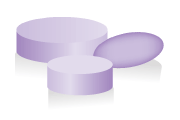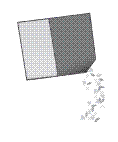Sevelamer in dialysis
This leaflet is for parents and carers about how to use this medicine in children. Our information may differ from that provided by the manufacturers, because their information usually relates to adults. Read this leaflet carefully. Keep it somewhere safe so that you can read it again.
Name of medicine
Sevelamer (also called sevelamer hydrochloride and sevelamer carbonate)
Brand name: Renagel®, Renvela®
Why is it important for my child to take Sevelamer?
This leaflet is about the use of sevelamer in dialysis.
Children with kidney disease who need to have dialysis cannot control the level of phosphate in their blood after a meal. When the level of phosphate is too high (hyperphosphataemia), this can lead to high blood pressure, itchy skin, red eyes, and bone pain and increase the risk of fractures.
Sevelamer works by binding to phosphate in food so it cannot get from the stomach into the blood.
What is Sevelamer available as?
- Tablets: 800 mg
- Powder: 2.4 g sachets, citrus flavoured
When should I give Sevelamer
Sevelamer is given three times a day with meals.
Give the medicine at about the same times each day with their meals, so that this becomes part of your child’s daily routine, which will help you to remember.
How much should I give?
Your doctor will work out the amount of Sevelamer (the dose) that is right for your child. The dose will be shown on the medicine label.
Your doctor may suggest that your child starts with a low dose. They may then increase the dose as your child gets used to the medicine and depending on how they respond to it. Your doctor will explain what to do. If you are not sure how much to give, check with your doctor, nurse or pharmacist.
It is important that you follow your doctor’s instructions about how much to give.
How should I give Sevelamer?

Tablets
- Tablets should be swallowed with a glass of water. Your child should not chew the tablet.

Powder
- Mix the contents of the sachet in 60 mL water. Your doctor or pharmacist will have told you how much to give to your child. Give the right amount of mixture to your child straight away using an oral syringe or medicine spoon. You can get these from your pharmacist. Do not use a kitchen teaspoon as it will not give the right amount.
- Throw away any unused liquid. Do not keep it for later.
- Alternatively, the correct amount of powder can be mixed with around 120ml or half a glass of cold beverage or a small amount cold food such as yoghurt or jam. Your child should drink or eat all the mixture straight away or within 30 minutes of it being mixed.
When should the medicine start working?
Sevelamer will start working straight away, although you will not see any difference in your child.
What if my child is sick (vomits)?
- If your child is sick less than 30 minutes after having a dose of Sevelamer, give them the same dose again.
- If your child is sick more than 30 minutes after having a dose of Sevelamer, do not give them another dose. Wait until the next normal dose.
If your child is sick again, seek advice from your family doctor, nurse, pharmacist, or hospital. They will decide what to do based on your child’s condition and the specific medicine involved.
What if I forget to give it?
Do not give the missed dose. Just give the next dose as usual, with the next meal.
What if I give too much?
You are unlikely to cause harm if you give an extra dose of Sevelamer by mistake. If you are concerned that you may have given too much, contact your doctor or local NHS services (details at end of leaflet). Have the medicine or packaging with you if you telephone for advice.
Are there any possible side effects?
We use medicines to make our children better, but sometimes they have other effects that we don’t want (side-effects).
- Your child may get stomach ache and may feel sick (nausea) or be sick (vomit). They may also get indigestion, flatulence (wind) or diarrhoea (runny poo).
- They may start to itch or get a rash. It may help to apply a soothing cream that softens the skin.
These effects should wear off as your child gets used to the medicine. If you are worried or they are still a problem after two weeks contact your doctor.
There may sometimes be other side effects that are not listed above. If you notice anything unusual and are concerned, contact your doctor. You can report any suspected side effects to a UK safety scheme at mhra.gov.uk/yellowcard
Can other medicines be given at the same time as Sevelamer?
- You can give your child medicines that contain paracetamol or ibuprofen, unless your doctor has told you not to.
- Sevelamer should not be taken with some medicines. Tell your doctor or pharmacist about any other medicines your child is taking before giving Sevelamer.
- Do not give your child calcium or any other mineral supplements, unless your doctor has told you to.
Check with your doctor or pharmacist before giving any other medicines to your child. This includes herbal and complementary medicines.
Is there anything else I need to know about this medicine?
Keep all your clinic appointments, as your doctor or nurse needs to check how your child is doing.
- Do not give your child any other medicines for 1 hour before or 3 hours after you give them sevelamer. Sevelamer can bind to other medicines so they work less well.
- It is important that your child takes the sevelamer with their main meals, not just a snack.
- Your doctor will test your child’s blood regularly to check the level of phosphate and make sure the dose of sevelamer is correct.
- Your child may need to follow a diet that is low in phosphates. Your doctor or dietician can advise what your child should eat and drink, and help you plan meals so your child gets the right amount in their diet.
General advice about medicines
- If you are not sure a medicine is working, contact your doctor but continue to give the medicine as usual in the meantime. Do not give extra doses, as you may do harm.
- Only give this medicine to your child. Never give it to anyone else, even if their condition appears to be the same, as this could do harm.
- Make sure that you always have enough medicine. Order a new prescription at least 2 weeks before you will run out.
- Make sure that the medicines you have at home have not reached the ‘use by’ date on the packaging. Give old medicines to your pharmacist to dispose of.
If you think someone else may have taken the medicine by accident, contact your doctor straight away.
Where should I keep this medicine?
- Keep the medicine in a cupboard, away from heat and direct sunlight.
- It does not need to be kept in the fridge.
- For tablets, keep the bottle tightly closed in order to protect the tablets from moisture.
- Make sure that children cannot see or reach the medicine.
- Keep the medicine in the container it came in.
Who to contact for more information?
Your doctor, pharmacist or nurse will be able to give you more information about Sevelamer and about other medicines used to treat hyperphosphataemia during dialysis.
England: NHS 111
Tel 111
www.nhs.ukScotland: NHS 24
Tel 111
www.nhs24.scotNorthern Ireland: NI Direct
Wales: NHS 111 Wales
Tel 111
www.111.wales.nhs.ukCopyright disclaimer
Version [1]. © NPPG, RCPCH and WellChild, all rights reserved. Review by August 2016.
The primary source for the information in this leaflet is the British National Formulary for Children. For details on any other sources used for this leaflet, please contact us through our website, www.medicinesforchildren.org.uk.
We take great care to make sure that the information in this leaflet is correct and up-to-date. However, medicines can be used in different ways for different patients. It is important that you ask the advice of your doctor or pharmacist if you are not sure about something. This leaflet is about the use of these medicines in the UK, and may not apply to other countries. The Royal College of Paediatrics and Child Health (RCPCH), the Neonatal and Paediatric Pharmacists Group (NPPG), WellChild and the contributors and editors cannot be held responsible for the accuracy of information, omissions of information, or any actions that may be taken as a consequence of reading this leaflet.
